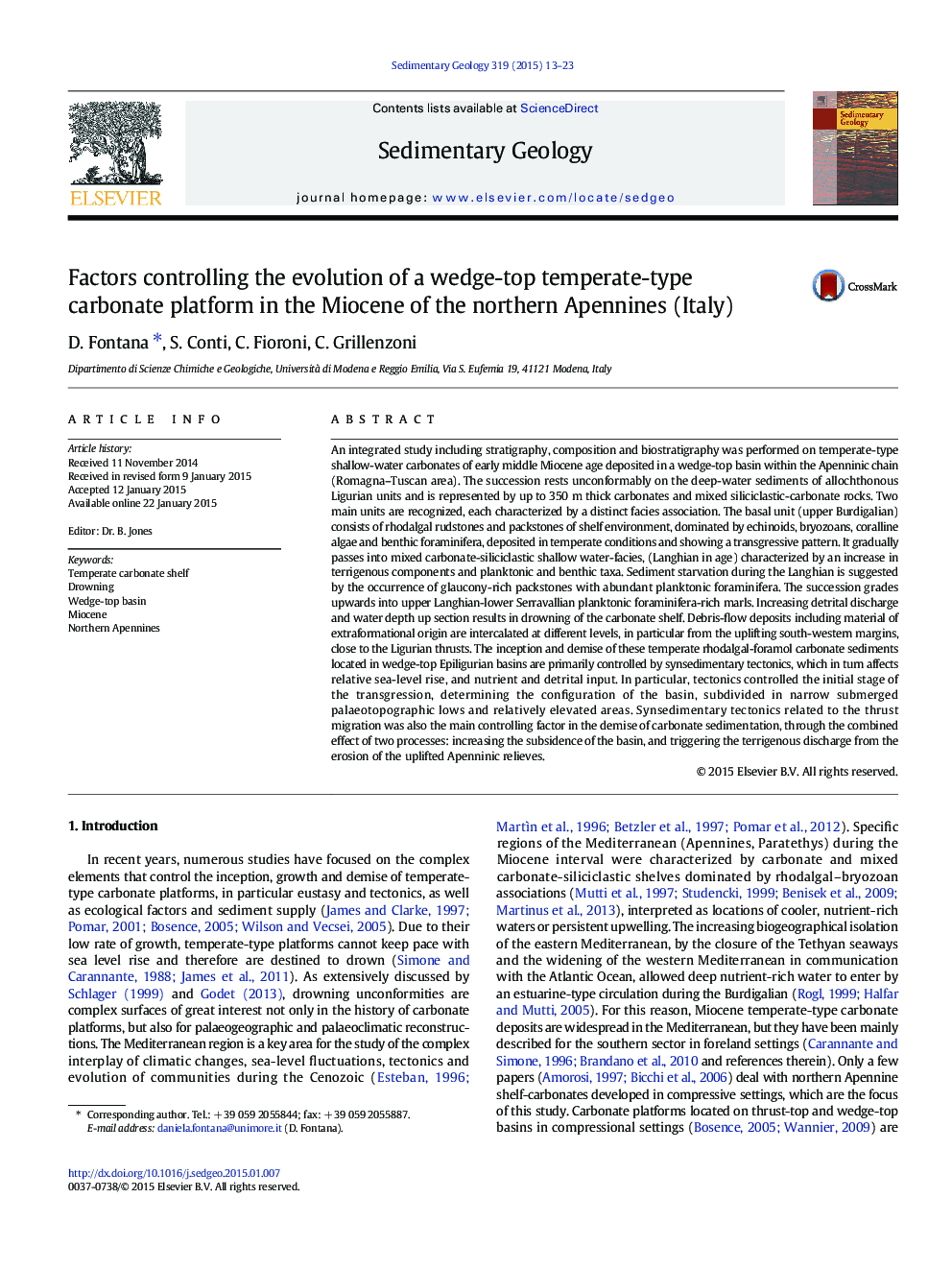| کد مقاله | کد نشریه | سال انتشار | مقاله انگلیسی | نسخه تمام متن |
|---|---|---|---|---|
| 4689317 | 1636044 | 2015 | 11 صفحه PDF | دانلود رایگان |
عنوان انگلیسی مقاله ISI
Factors controlling the evolution of a wedge-top temperate-type carbonate platform in the Miocene of the northern Apennines (Italy)
ترجمه فارسی عنوان
عوامل مؤثر در کنترل تکامل یک پلت فرم کربنات سبک نوعی گوه بالا در میوسن شمالی آپنین (ایتالیا)
دانلود مقاله + سفارش ترجمه
دانلود مقاله ISI انگلیسی
رایگان برای ایرانیان
کلمات کلیدی
قفسه کربنات معطر، غرق شدن حوضه قله، میوسن، شمال آفریقا،
موضوعات مرتبط
مهندسی و علوم پایه
علوم زمین و سیارات
فرآیندهای سطح زمین
چکیده انگلیسی
An integrated study including stratigraphy, composition and biostratigraphy was performed on temperate-type shallow-water carbonates of early middle Miocene age deposited in a wedge-top basin within the Apenninic chain (Romagna-Tuscan area). The succession rests unconformably on the deep-water sediments of allochthonous Ligurian units and is represented by up to 350Â m thick carbonates and mixed siliciclastic-carbonate rocks. Two main units are recognized, each characterized by a distinct facies association. The basal unit (upper Burdigalian) consists of rhodalgal rudstones and packstones of shelf environment, dominated by echinoids, bryozoans, coralline algae and benthic foraminifera, deposited in temperate conditions and showing a transgressive pattern. It gradually passes into mixed carbonate-siliciclastic shallow water-facies, (Langhian in age) characterized by an increase in terrigenous components and planktonic and benthic taxa. Sediment starvation during the Langhian is suggested by the occurrence of glaucony-rich packstones with abundant planktonic foraminifera. The succession grades upwards into upper Langhian-lower Serravallian planktonic foraminifera-rich marls. Increasing detrital discharge and water depth up section results in drowning of the carbonate shelf. Debris-flow deposits including material of extraformational origin are intercalated at different levels, in particular from the uplifting south-western margins, close to the Ligurian thrusts. The inception and demise of these temperate rhodalgal-foramol carbonate sediments located in wedge-top Epiligurian basins are primarily controlled by synsedimentary tectonics, which in turn affects relative sea-level rise, and nutrient and detrital input. In particular, tectonics controlled the initial stage of the transgression, determining the configuration of the basin, subdivided in narrow submerged palaeotopographic lows and relatively elevated areas. Synsedimentary tectonics related to the thrust migration was also the main controlling factor in the demise of carbonate sedimentation, through the combined effect of two processes: increasing the subsidence of the basin, and triggering the terrigenous discharge from the erosion of the uplifted Apenninic relieves.
ناشر
Database: Elsevier - ScienceDirect (ساینس دایرکت)
Journal: Sedimentary Geology - Volume 319, 15 April 2015, Pages 13-23
Journal: Sedimentary Geology - Volume 319, 15 April 2015, Pages 13-23
نویسندگان
D. Fontana, S. Conti, C. Fioroni, C. Grillenzoni,
